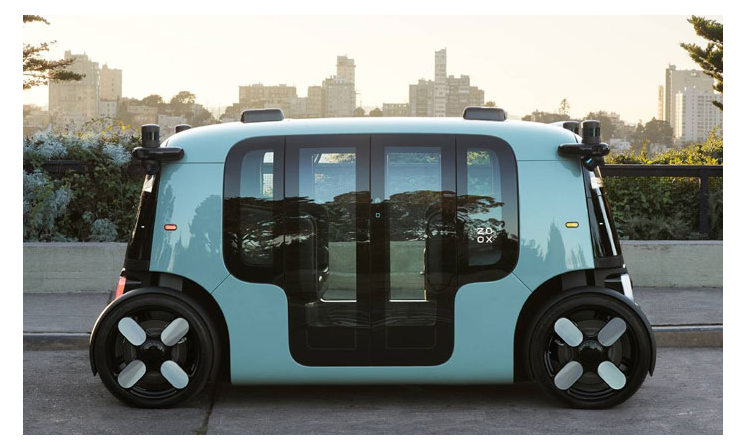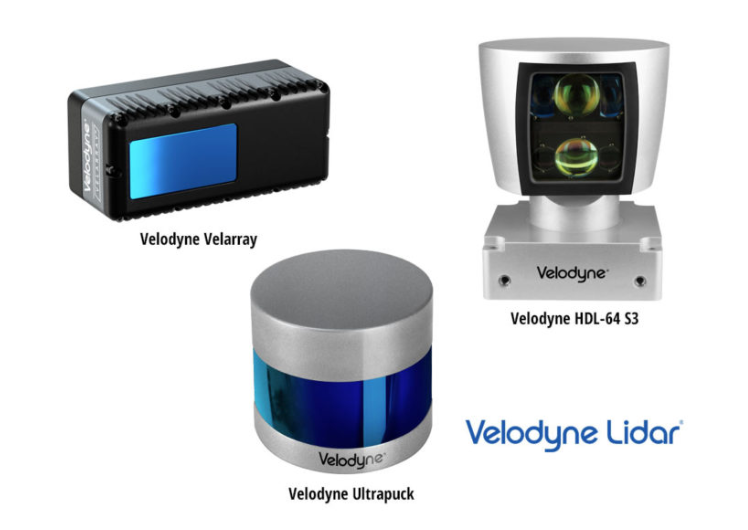On February 7th, Amazon announced the acquisition of 16% shares of Velodyne, a lidar company, to increase its autonomous driving business.
Velodyne:the leader of LiDAR
Velodyne is a global leader in the field of lidar. Most autonomous driving companies, including Google Waymo, Baidu and Didi, have used Velodyne's lidar. At the same time, many vehicle companies have chosen Velodyne's products when developing autonomous vehicles.

In addition, Velodyne products are also used in many other fields, including self-driving cars, ADAS, unmanned aerial vehicles, mapping, industrial automation, smart cities and robotics.
In July 2020, Velodyne announced its merger with Graf Industrial through reverse acquisition, and listed on NASDAQ in the form of SPAC.
However,many lidar companies emerged at home and abroad, hoping to seize the mechanical lidar market of Velodyne at a lower price, and use new technologies such as hybrid solid-state lidar and even all-solid-state lidar to achieve overtaking.
In a word, Velodyne has not been smooth sailing since its listing, and it has also experienced internal strife, business decline and stock price collapse. In 2021, the annual shipment of Velodyne lidar exceeded 15,000 units, an increase of about 28% compared with the whole year of 2020. Once the automatic driving technology is mature, the application of vehicle-level lidar in mass production vehicles will be the most potential growth point of Velodyne.
What does the acquisition mean for Amazon?
As early as two years ago,Amazon spent $1 billion to acquire Zoox, an American autonomous driving company,attempting to seize the autonomous driving highland.
Bezos' purpose goes far beyond this. Autopilot technology can help Amazon improve the efficiency of cargo transportation and delivery and increase the profitability of its core business. Moreover, the computing vision and perception capabilities of autonomous driving companies are also an important driving force for Amazon's robotics, security and unmanned stores in the future.
However, unlike autonomous driving companies such as Waymo, Argo, Cruis and Aurora, Zoox does not have R&D alibilties.So Amazon choose to acquire a lidar company once again. These two acquisitions show Amazon's strong purpose.
We can feel that Amazon is not only interested in autonomous driving, but also pays more attention to computing vision and perception. This technology can empower a wider range of businesses including artificial intelligence, drones, taxis, logistics, security and retail. In fact, giants such as Apple and Intel all need to acquire radar companies.
Lidar is the core hardware of fully automatic driving
While the downstream new energy vehicle manufacturers compete with each other and the competition intensifies, the software and hardware competition related to the autonomous driving has already started to battle.
Lidar, a hard core accessory, frequently appears in the configuration table of major models. According to statistics, at present, at least 20 car companies and autonomous driving companies have announced that they will use lidar as a part of the sensing kit, and then mass-produce autonomous driving technology above L3 level.
The basic principle of automatic driving is the combination of three steps: perception, decision-making and execution. The perception layer uses visual sensors to obtain the surrounding road condition information, processes the data through the equipment end of the car body and the cloud, and obtains the execution command, so that the car can obtain the ability of automatic driving.
There are currently two technical routes in the market: visual perception and lidar perception.
What is lidar? Simply put, lidar can measure the distance and orientation of surrounding objects by emitting laser beams, so as to judge the relative position between vehicles and obstacles. The autopilot algorithm will be based on the number of senses from these sensorsAccording to the report, various operation instructions were finally issued to the vehicle.
It can be said that lidar is now the core hardware for smart cars to realize fully automatic driving. Except Tesla, of course.
As early as 2015, Tesla announced the launch of AutoPilot, which took the lead in the large-scale popularization of L2 + and L3 autonomous driving in mass production models. Because lidar was still expensive at that time, Musk put forward a pure vision automatic driving scheme, abandoned the expensive lidar, and has been in use ever since. Because in his view, "pure visual perception is the way to AI in the real world", the dispute between pure vision and lidar began.
Almost all domestic models adopt lidar route, which has the advantages of long detection distance, high accuracy and strong anti-interference ability. Even if the light is not good at night, it will not affect the detection effect; Disadvantages are high cost, sensitive to weather, rain, snow, dust and foggy weather, which affect the recognition effect of lidar.
Tesla's persistent visual perception is a camera-led scheme, and the cost of camera has great advantages over lidar. Cameras cost tens of dollars, while lidar costs hundreds of dollars, which is several times that. Furthermore, the camera technology is gradually mature, and the high-resolution and high-frame rate imaging technology makes the perceived environmental information richer. However, the camera's perception in the dark environment is limited, and its accuracy and security have declined.
Although Musk insists on using cameras, the fact is that lidar has gradually matured and is widely used in almost all non-Tesla self-driving cars. I believe that the software and hardware related to autonomous driving will become a very hot concept this year.
We may wish to pay attention to these US lidar concept stocks:$Luminar Technologies, Inc.(LAZR)$,$Velodyne Lidar Inc(VLDR)$,$Microvision(MVIS)$,$Innoviz Technologies Ltd.(INVZ)$,$Aeva Technologies Inc.(AEVA)$,$Ouster Inc.(OUST)$


Comments